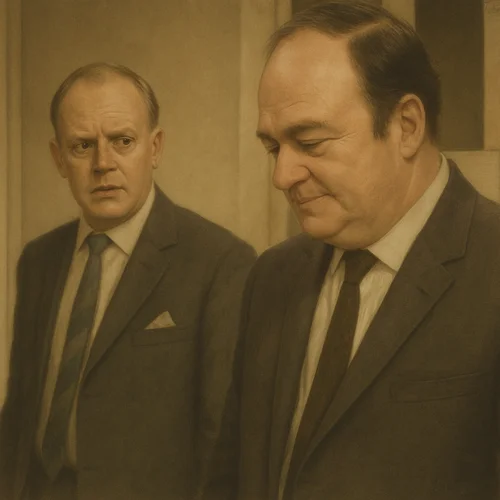6-minute read
Premise
Imagine tuning into a gritty British police drama in the late 60s. That was Softly, Softly: Task Force. Viewers kept watching because it felt real—rare for TV then. The show was slow, smart, and had fleshed-out characters who made you care. It wasn’t about explosions; it was about police work, ethics, and loyalty. Every episode pulled you deeper into the cases and personal struggles of a Thamesford CID team fighting serious crime. It got under your skin because it showed you what cops really face—no sugarcoating. So, if you like procedural dramas that make you think, this was your fix back then.
Characters
- Charlie Barlow — Tough, strategic, a no-nonsense leader, he commands respect immediately. His promotion sparks the Thamesford saga. Think of him as the gruff father figure of the force.
- John Watt — Barlow’s principled deputy, later taking charge. He’s the moral compass, walking a fine line between law and morality. Viewers loved watching his evolution from cop to boss.
- Harry Hawkins — The steady hand. Practical and reliable, he keeps the team grounded during chaos. The face of stability in turbulent times.
- Bob Evans — Loyal, dependable, relentless in his work. The team’s behind-the-scenes workhorse who rarely seeks the spotlight.
- PC Snow — Dog handler with a heart. His bond with Inky (and later Radar) brought tenderness and tension to the gritty crime stories.
- Cullen — The bureaucratic chief. Represents the institutional pressure cops often face, sometimes an obstacle, sometimes their ally.
Production and Style
The show was shot mostly on location in Kent, giving it that authentic British TV feel. It combined real-world settings with studio scenes that kept the focus tight on detective work and personal clashes. Think dialogue-heavy with some tense strategic planning. Action was minimal but meaningful, emphasizing clever patience over cheap thrills. It’s a slow-burn, letting you watch the minds at work behind the badge.
Series Structure and Progression
- 1969–1972: Barlow’s leadership begins to shape the Thamesford PD. They tackle thefts, assaults, murders—heavy stuff. Political pressures add extra drama.
- 1972–1976: Barlow exits, Watt takes over. Hawkins, Evans, and Snow stay on, handling new cases while keeping the team grounded. The series grows deeper and more layered.
- Specials and spin-offs: Barlow and Watt pop up later in other shows, like Jack the Ripper, exploring more historical and investigative depths. Fans loved this expanded universe.
Writing, Themes, and Tone
The scripts combined authentic police work with complex characters. Episodes shifted smoothly from strategic crime-solving to internal conflicts. Themes like loyalty, authority, and moral grey areas came up repeatedly. It wasn’t about guns blazing but about what police do under pressure, and how that impacts them personally.
Iconic Episodes and Moments
- “Escort” (Series 1, Episode 16): The heartbreaking death of PC Snow’s police dog Inky highlights how dangerous and personal police work is. It’s emotional and raw.
- Barlow’s departure (1972): A big change that shakes up the team. Watt steps up, leading to new conflicts and storylines that kept viewers hooked.
- Jack the Ripper Special: Barlow and Watt revisit the infamous case. It’s their detective skills on full display, and it kept fans glued to the TV.
Cultural Impact
This series was celebrated for its realism—no glamorized heroics here. Fans loved the relatable characters and clever plots. It became a staple in British homes, sparking memes and references long after it aired. People still talk about its gritty, thoughtful approach, inspiring later police dramas.
Legacy
Softly, Softly: Task Force left its mark. It pushed the boundaries of what cop shows could be—more than just action, it was about the mind games, ethics, and routines of police life. Its reputation remains strong among fans of classic British TV. Decades later, it’s still recognized as a pioneer, setting a high bar for authenticity and storytelling.
If You Only Watch One Episode….
Pick “Escort,” Series 1, Episode 16. It’s the emotional core of the series, showcasing police dogs’ dangerous work and the emotional toll on officers. Plus, it’s a beautifully crafted stand-alone story that sums up what made Softly, Softly special: real human drama mixed with procedural integrity.
